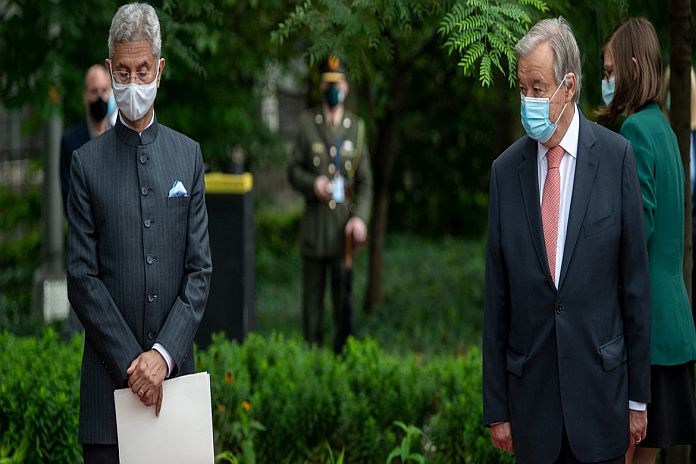NEW YORK, USA – The Organization and its 12 peacekeeping missions around the world must fully embrace new technology in the face of ever-changing challenges, the UN chief said on Wednesday as he outlined to the Security Council his Strategy for the Digital Transformation of UN Peacekeeping.
New technologies are changing the character and nature of conflict, with an “indelible impact” on civilians, Secretary-General António Guterres told the ministerial-level open debate on technology and peacekeeping – a highlight of India’s turn as Council President this month.
‘Art of the possible’
Throughout its 75-year history, the UN has adapted and innovated, and the very idea of peacekeeping is itself the result of “the art of the possible”, he said while reminding however, that peacekeeping was conceived in an analogue world.
“It is now essential that it fully embraces the digital world in which we live, to improve the UN’s agility, anticipation and responsiveness to conflicts and to be able to address the challenges of today and tomorrow”, underscored Guterres.
“A shift in peacekeeping culture – as well as a systemic change – are required for this to happen”.
Charting the goals
Outlining the objectives of the Digital Transformation Strategy, the top UN official said that it aims to drive technology innovation at Headquarters and in the field.
It also seeks to maximize the potential of current and new technologies to help peacekeeping missions carry out their mandates – including an improve capacity to spot threats to civilian lives.
“Peace operations should be better able to detect, analyze and address threats against both civilians and peacekeepers, as well as political and humanitarian missions, in a timely and integrated way”, he continued.
And the UN must ensure the responsible use of digital technologies by peace operations by developing clear principles and undertaking human rights due diligence wherever there is a potential for harm.
“The digital transformation is already permeating our peace operations”, he said, pointing to the use of long-range cameras, unmanned aerial vehicles, ground surveillance radar and the UNITE AWARE situational awareness platform now being rolled out across four missions that provides blue helmets with terrain-related information.
Protecting UN personnel
Minutes earlier, the Council unanimously adopted a resolution calling upon Member States that are either hosting or have hosted UN peacekeeping operations to take all appropriate measures, in accordance with national and international law, to bring to justice to those who kill or attack UN personnel.
Through resolution 2589 (2021), the 15 ambassadors also requested the Secretary-General to establish a comprehensive online database of attacks against UN staff and peacekeepers, accessible to host countries, troop- and police-contributing countries, and countries of nationality of civilian personnel.
Honouring the fallen
Previously, the Secretary-General spoke at a solemn ceremony paying tribute to the more than 4,000 peacekeepers who gave their lives while serving under the blue flag.
“Among them are 174 Indian peacekeepers, the highest number of all the troop-contributing countries. We are forever grateful for their service”, said Guterres. “Their remarkable work, and ultimate sacrifice, will never be forgotten”.
After a moment of silence, he upheld that peacekeepers today proudly carry on the legacy of those we have lost.





